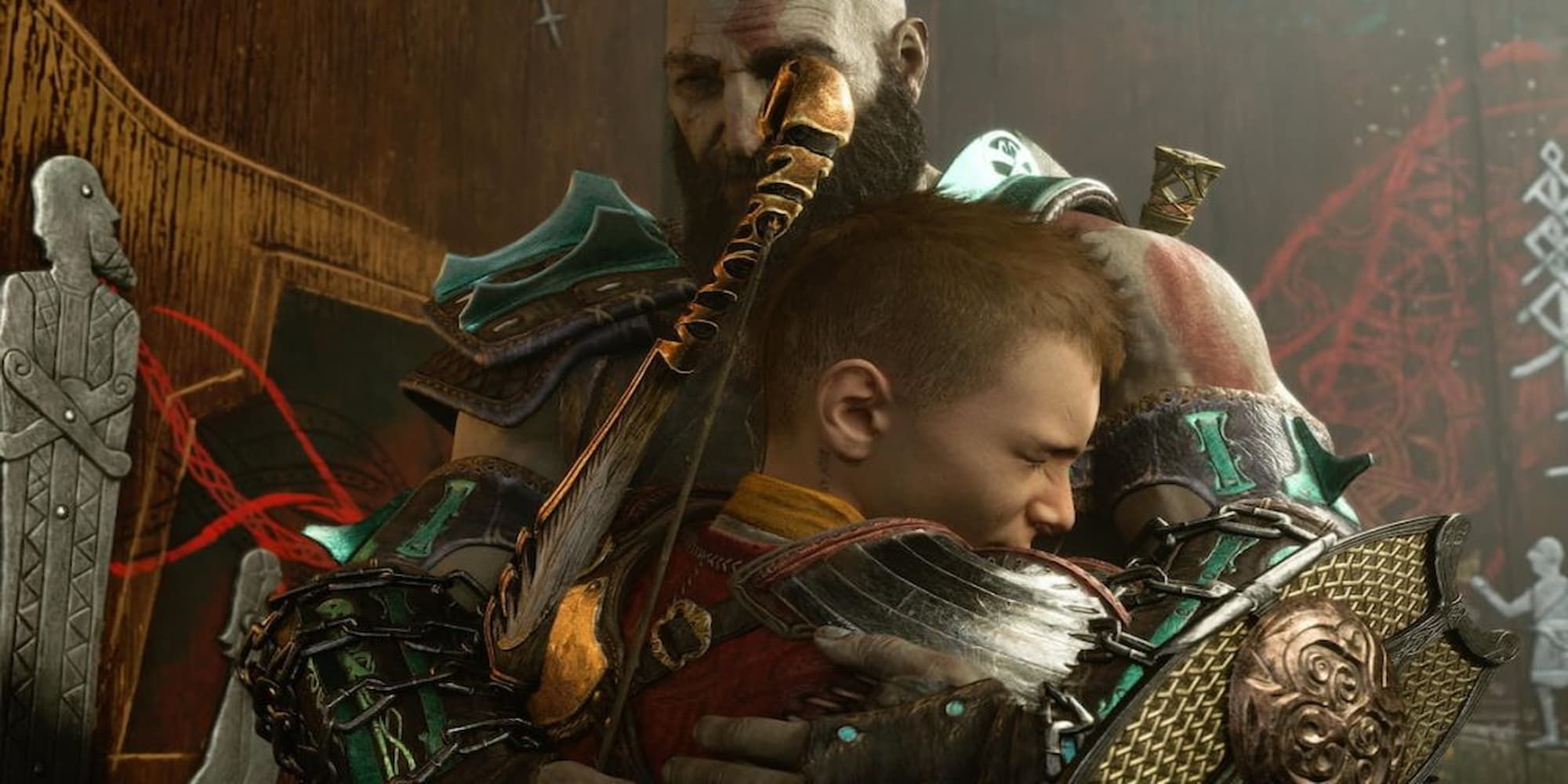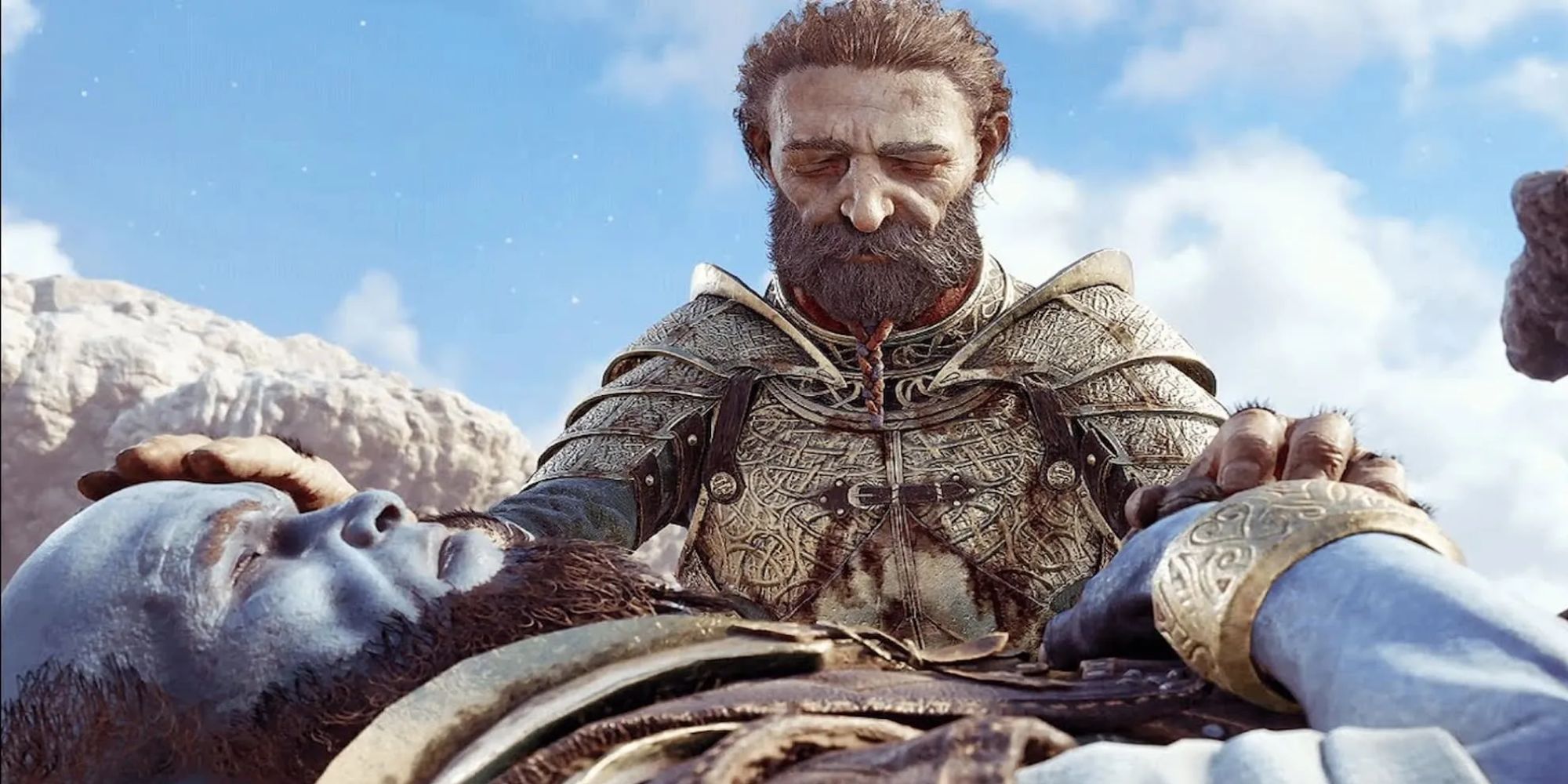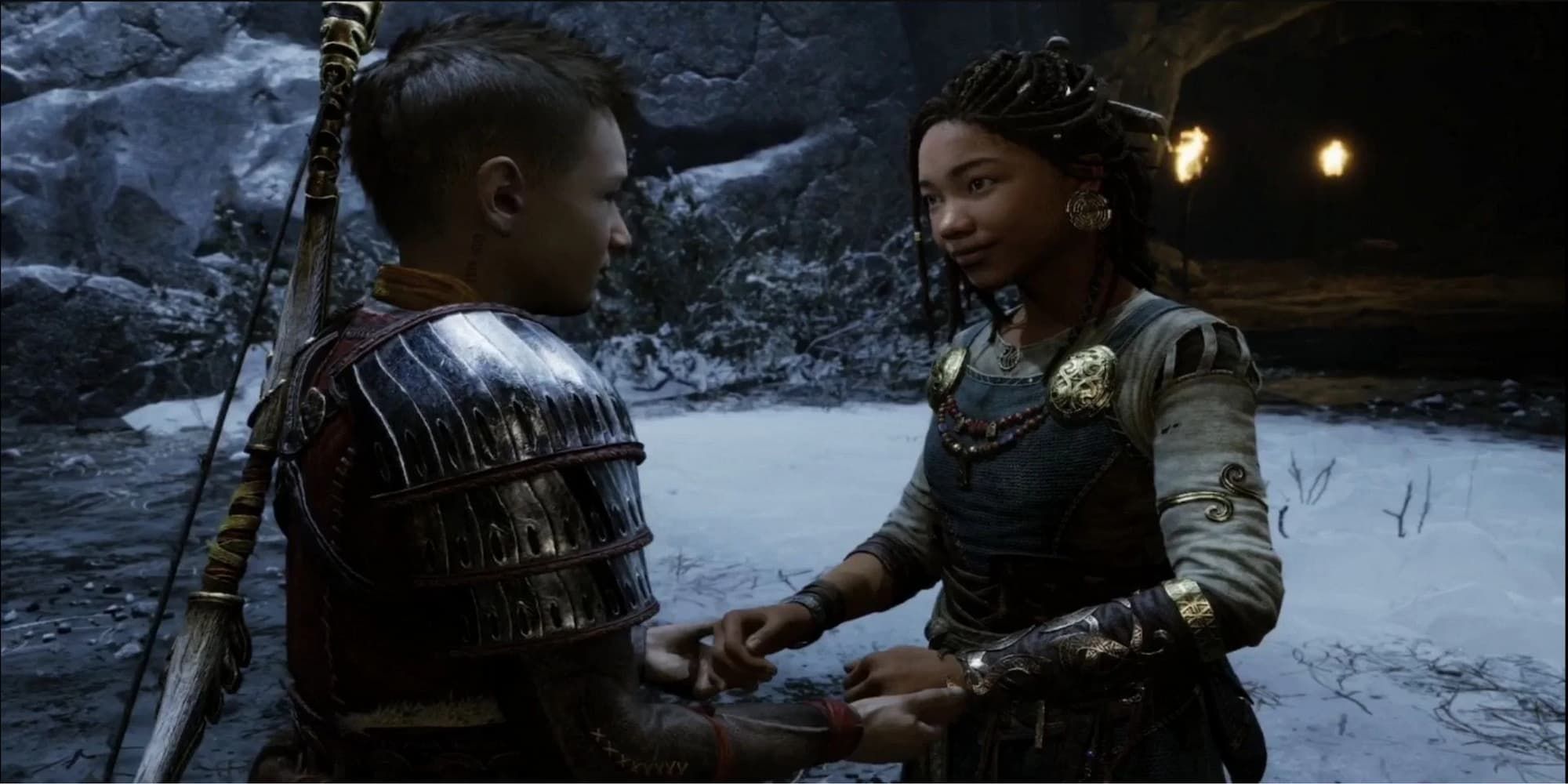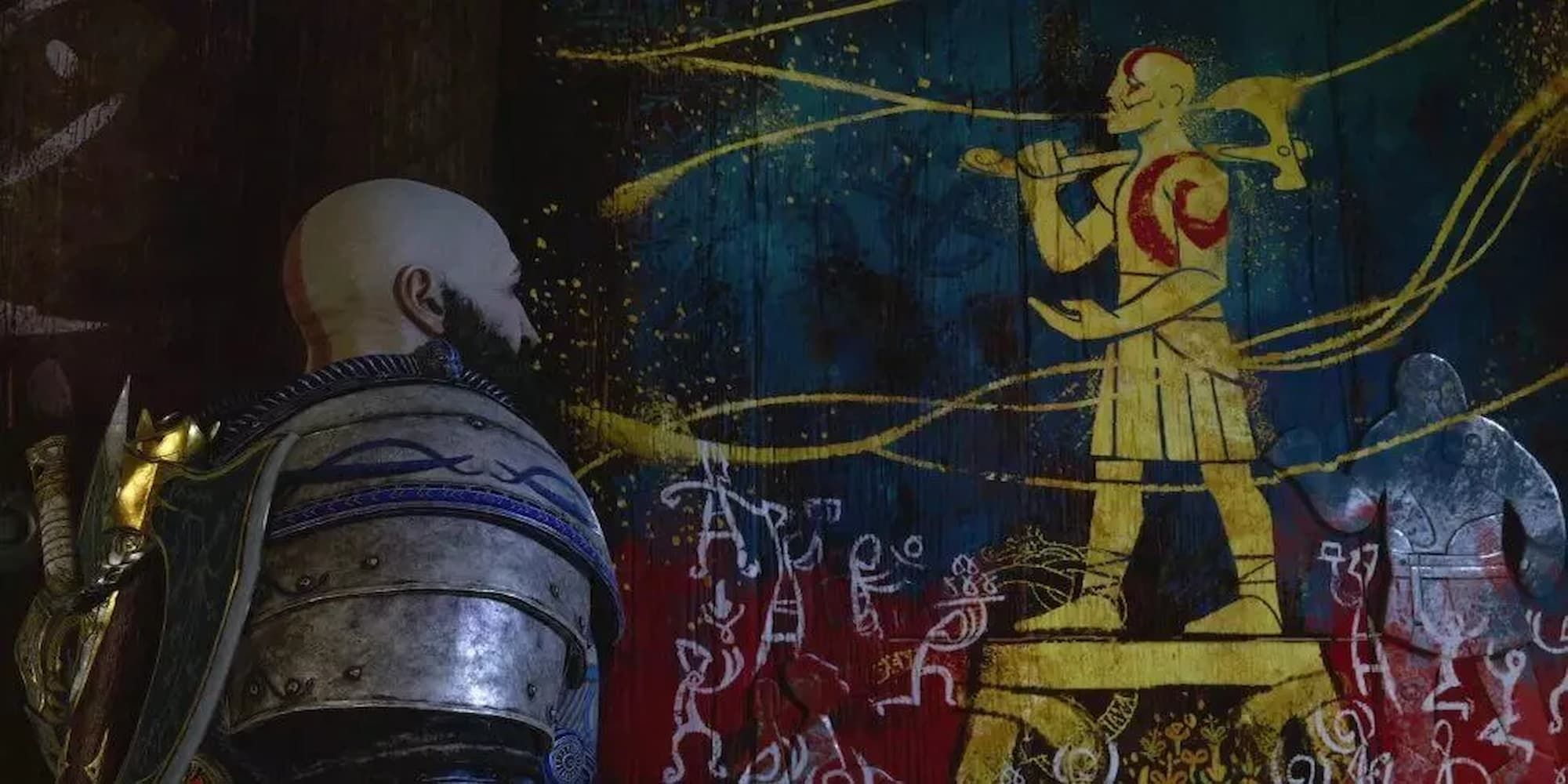The ending of God of War (2018) had several moments that led to the story of its sequel, Ragnarok. The consequences of Kratos’ actions in the last game come front and center as Ragnarok draws near for the nine realms.
There were several twists throughout the game that had players on the edge of their seats right until the end. After the final battle is over and the dust settles, many wonder what the next step for our characters is and what those final cutscenes mean.
*** This Article Contains Spoilers For God Of War Ragnarok ***
Asgard, Odin, And The Aesir
Despite Kratos’ hesitancy to be involved in a new war with his son, Ragnarok eventually begins. Following in line with the prophecy of Ragnarok, Surtur plunges his sword into the heart of Asgard, destroying it completely. The realm of Asgard is gone, and the remaining Aesir Gods no longer have their home.
Odin spent much of his life obsessed with knowledge in an attempt to prevent Ragnarok and save his life. Some of this knowledge is shown through the semi-successful defense of Asgard at the beginning of the invasion. Despite his planning, Odin is eventually killed. After seeing Odin as unredeemable, Atreus traps his soul in a marble. Despite being in a war and trying to stop Odin, Atreus did everything in his power to prevent All-Father’s death. Both Atreus and Kratos are able to hold back and not submit to their rage and just kill for the sake of winning the war. This moment shows that despite the events of the past two games, Atreus is able to keep his heart intact and show mercy despite all the evil Odin has done.
Sindri, on the other hand, can not contain his rage, and after crushing the marble, he ends Odin’s life. Without Odin or Asgard, a new age is beginning for what’s left of the Aesir Gods. Many, like Sif, are happy being free from his rule and now seek a new life within the remaining eight realms. Others are said to travel to different realms, undoing the damage done by Odin and no longer locking themselves in their high tower of Asgard. This new age can show the Aesir Gods helping the inhabitants of the other realms and all the other realms being built up into a sort of haven, much like Asgard.
Freya’s VS Sindri’s Vengeance
After the events of the last game, Freya was perfectly set up to be a recurring antagonist this time around, and she does initiate the opening sequence’s fight. After learning more about Kratos’ share of grief, she turns her anger on Odin, who truly caused her pain. Finally, having Odin’s life in her hands, she chooses to spare him. Through her time with Kratos, she sees the effects of the vengeance she always desired. Kratos got his vengeance against Zeus, which left him feeling empty and never truly satisfied. Instead of chasing this same feeling, Freya learns from Kratos and chooses to be the good person she was before Odin.
Sindri, on the other hand, has been broken by Odin after Brok’s death. It’s also stated that without the final piece of his soul, Brok won’t receive an afterlife, meaning he is gone for good. Not only did Sindri’s brother die in front of him, but his actions led to his brother’s soul being lost for good. Despite getting his vengeance and giving Brok a fitting funeral, Sindri is still broken and hateful. It is shown in the final battle that much of Sindri’s hate is aimed at Atreus, and without Odin, Atreus may be the sole target for Sindri’s anger in the future.
Atreus’ New Path
While the last installment of God of War had Atreus learning who he was, this installment focuses on what is next for the young God. Learning giant magic and their history was only the beginning of his story. Having learned that the giants are alive and are in hiding, Atreus sees it as his responsibility to find them and bring them back from hiding. Along with Angrboda, they are the keepers and protectors of the future of the giants. Throughout the game, Atreus only released the soul of a single giant and inadvertently created Jormungandr. Well, many other marbles are left in the bag, each with a different giant’s soul.
Atreus’ character arc as the naive son has come to a close. He is unrecognizable compared to when we first met him at God of War’s (2018) beginning. While his relationship with his father is now the best it has ever been, it’s time for Atreus to apply those lessons to his journey to restore the giants and carve his own path.
Kratos’ Future
Through this game, it is brought to Kratos’ attention that despite being a God for countless years, no one worships or prays to him. As the Ghost of Sparta, he is only feared, and his earlier influence in the new realm only resulted in more fear. Upon seeing the other side of the last mural, Kratos sees his future, being worshiped as a hero.
While his initial actions in this realm sparked the flames of war, his actions inevitably saved the remaining eight realms. This time around, Kratos goes to war on behalf of others and not for vengeance. Now, he is seen as a hero by the people of the realms and will be worshiped for it in the years to come. In this future, he can truly find peace, one where he can exist openly and not live hiding in the shame of his actions. It’s also shown that Kratos is taking on the role of protecting the realms and is using his powers to protect those who need him and not as the rageful God of War he once was.





